Claypot Cooking Care
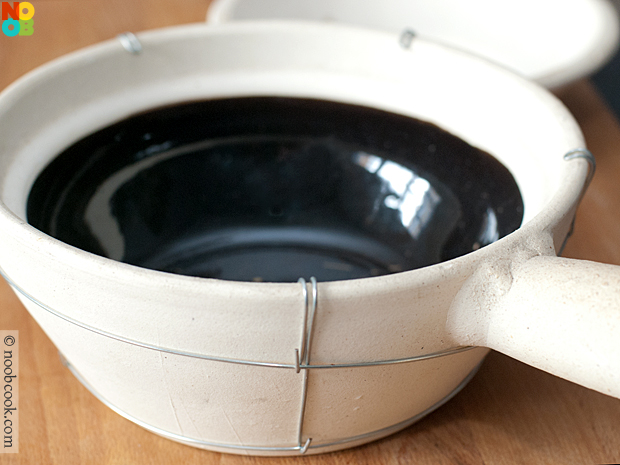
I’m now a huge fan of claypot (砂鍋/ 煲仔) cooking. I fell in love with it ever since I used it for the first time to cook braised chicken with bittergourd, and the most recent claypot dish I cooked – claypot chicken rice – totally impressed me again with the distinctive smoky flavour. In short, everything looks and tastes better when cooked in a claypot. This is a short article about Chinese claypot care as a reference for those who might be interested to venture into claypot cooking too. If you have more tips about claypot cooking, please share them with me at the comments section.
Benefits of clay pot cooking
1. Since the material is porous, it absorbs water. When cooking food, the moisture is released, making the cooked food moist, juicy and tender similar to steaming effect. There is also less evaporation of water and food do not burn so easily.
2. The claypot retains heat well, so it can cook food in a quicker and more effective way. It also keeps the food warm and further slow-cook it, with lid close for at least another half an hour after cooking.
3. You can re-heat and serve the food in the claypot right away.
4. Dishes such as claypot rice have a wonderful earthy and smoky flavour which is distinctive with claypot cooking.
Selecting a claypot

Chinese claypot with glazed interior and coiled wires on the exterior
1. Make sure there are no visible cracks on the wall and the lid can close snugly.
2. Choose a claypot that comes with metal wires along the walls (pictured above) as it helps to conduct heat quickly and evenly throughout the casserole.
How to prep a brand new claypot for first time use
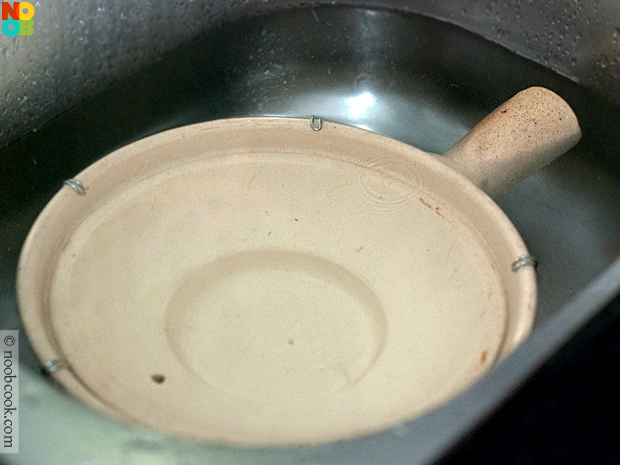
Soaking brand new claypot in water
1. Totally submerge and soak the claypot in water (turn the lid inside out) for at least half an hour (pictured above).
2. If there is any dirt or powder on the claypot, scrub it well with a hard brush or non-metallic scrubbing pad.
3. If you bought the type which is porous throughout (without the glazed interior walls), you can also boil some water or porridge in it after soaking.
4. Leave the claypot at room temperature to air dry, do not use dish washer.
5. For first time cooking in a new claypot, do not cook food with strong flavours such as seafood or curries as the smell may linger on and affect the taste of the other dishes.
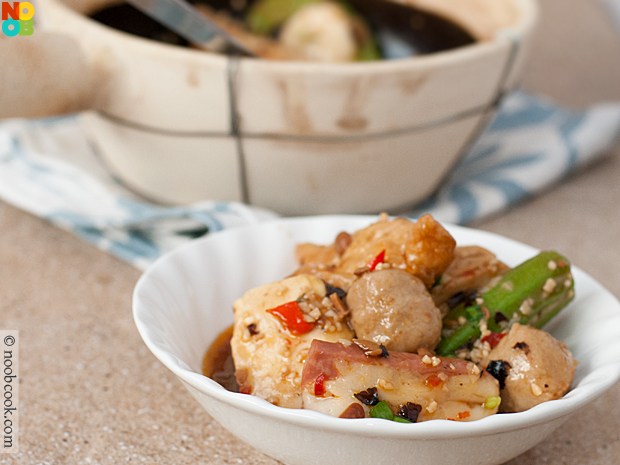
Claypot Yong Tau Foo
Care for clay pot
1. No sudden change in temperature. Claypot can withstand relatively high heat both on the stove top and inside the oven. However, they cannot withstand sudden fluctuations in temperature so always increase heat gradually. Do not put the claypot straight away inside a preheated oven; instead put it inside the cold oven and let it heat up gradually. On stove top, heat the claypot starting with a low medium heat and increase the temperature gradually. If you took the claypot out from the fridge, let it rest and return to room temperature before reheating.
2. Temperature. Since claypot conducts and retains heat well, you generally do not need as high heat as you normally need. You can use lower temperature to cook the same type of food, compared to the heat you normally use when cooking in other types of cookware.
3. Washing. After cooking, use a hard brush or non-metallic scouring pad to scrub. Wash the glazed part of the claypot with mild soapy water. For the unglazed part, do not use detergent as the porous material may absorb it. Instead, use natural cleaning agents such as lemon or vinegar solution.
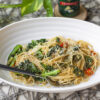





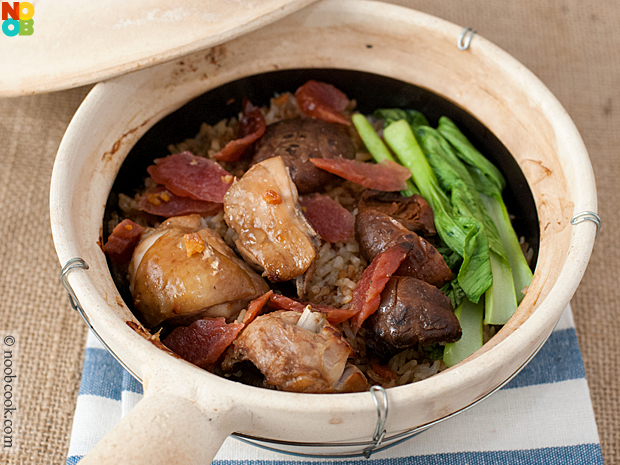






Good information. Thanks.
Claypot cooking is even better in colder weather due to the heat retention in the pot. I should have brought one with me when I moved. Will try to get one in future. Can you believe? I am even too lazy to hunt for claypot when I am over there :O sigh…
wow you reach US already, that’s fast. aiyah, next time you must bring a few claypots and some hong zao back!!!
Thanks for the info. I have one that I hardly use, this info. will come in handy.
No cooking rice for the first time to seal up any fine lines? That’s what the instructions said to do for my claypot. I don’t know if it works, but I did it anyway. :P
I cooked porridge as a prep for first time use. But it’s actually more applicable for those claypots which are unglazed on the inside (same porous material throughout). Mine is glazed interior but like you, I did it anyway lol
I have been using clay pots for so long. I had bought a set when I was visiting portugal. They even had one for a whole chicken. We call them “ollas”.
Nice post…I have a couple of clay pot, but do not use often enough…now that the cold may be arriving I’ll try to use it more often.
Hope you have a great week ahead and thanks for this informative post :-)
Thanks for this post! Nowadays it’s not so common to use claypot for cooking so I don’t even have the basic information to get started :P
food porn at its best!
Made bak kut teh using claypots – one is exactly like yours as seen in the photo!! Must try your claypot chicken rice recipe too – I do mine using a rice cooker – but hope to graduate to using a claypot for a more authentic flavour.
Kinda tricky to take care of those fragile things…Thank you for sharing this!!
Thanks for sharing these good tips :)